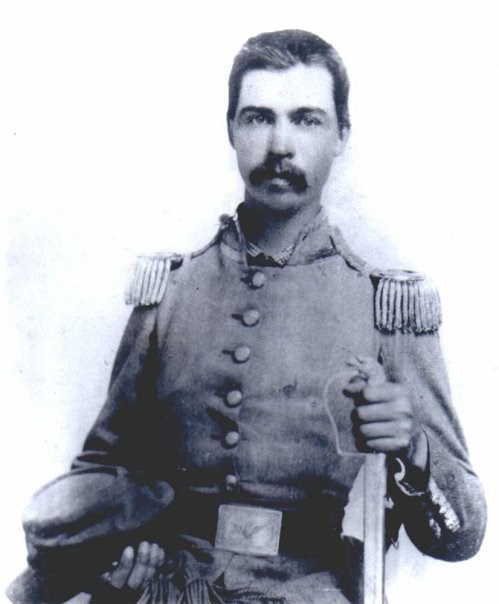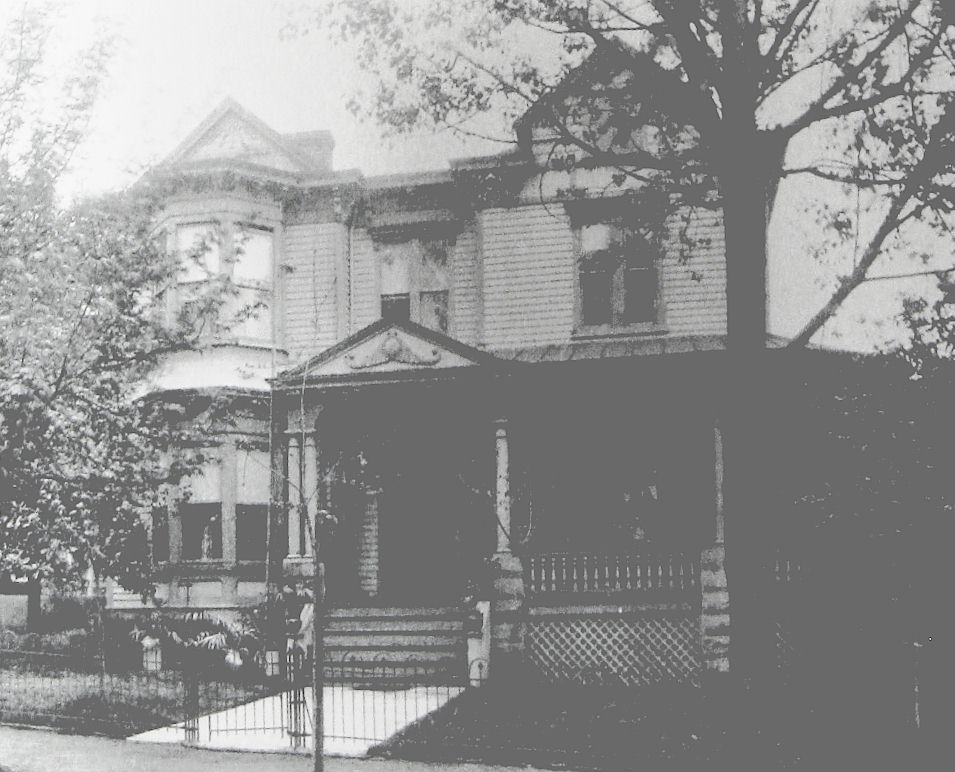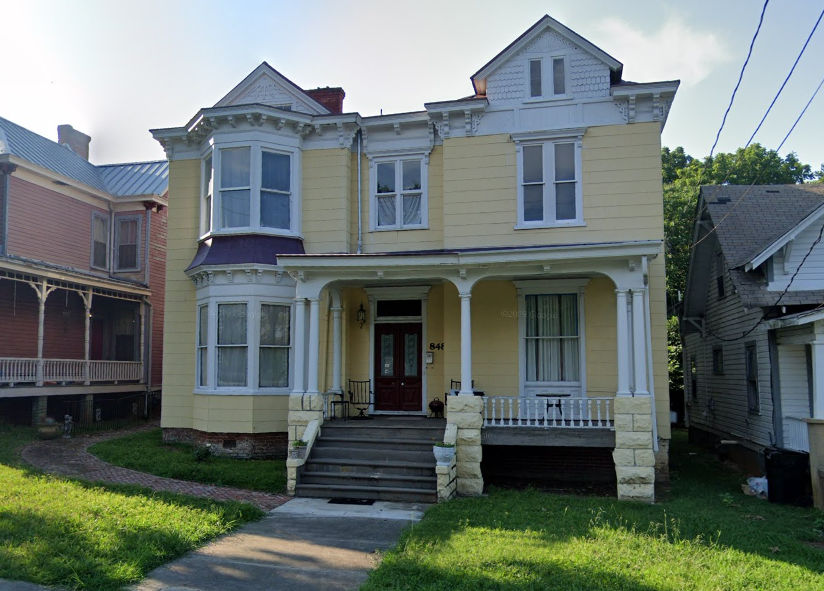The “double” house at 846-848 Green Street was built for railroad man George King Griggs. The Griggs family had been involved for generations in tobacco. Of colonist stock, the Griggs family came to America from England. Four brothers arrived, one settling in Boston, another in New York and later New Jersey. Brothers Michael and Robert settled in Lancaster County, Virginia. Robert Griggs’ will (ca. 1690) left a “Thousand pounds of tobacco to the poore.” After the Revolutionary War, a branch of the Virginia Griggs arrived in Henry County and settled farmland near Martinsville.
 George King Griggs was born in Henry County in September of 1839 and attended the Virginia Military Institute. He married Sallie Elizabeth Boyd of Halifax, Virginia on the 21st of April 1861, just a matter of nine days before the first battle of the Civil War began. Of course the conflict was no surprise. Perhaps in anticipation of enlisting, he decided to marry his sweetheart. George did enlist and participated in nearly all the battles fought by that division, suffering several wounds in the conflict. In 1862 he was wounded in the head at the Battle of Seven Pines and suffered another wound in the Battle of Antietam. In 1863 he rose to Major of the 38th Virginia Infantry. That same year he suffered a severe wound to his thigh during the Battle of Gettysburg. Following that battle, he became Lieutenant Colonel of his regiment and shortly after Colonel. In 1864, he was wounded during the Battle of Drewry’s Bluff. In 1865, at the close of the war, he was Brigade leader at Appomattox. A History of Henry County, Virginia describes Col. Griggs as being “distinctly a man of great executive force and rare judgment.”
George King Griggs was born in Henry County in September of 1839 and attended the Virginia Military Institute. He married Sallie Elizabeth Boyd of Halifax, Virginia on the 21st of April 1861, just a matter of nine days before the first battle of the Civil War began. Of course the conflict was no surprise. Perhaps in anticipation of enlisting, he decided to marry his sweetheart. George did enlist and participated in nearly all the battles fought by that division, suffering several wounds in the conflict. In 1862 he was wounded in the head at the Battle of Seven Pines and suffered another wound in the Battle of Antietam. In 1863 he rose to Major of the 38th Virginia Infantry. That same year he suffered a severe wound to his thigh during the Battle of Gettysburg. Following that battle, he became Lieutenant Colonel of his regiment and shortly after Colonel. In 1864, he was wounded during the Battle of Drewry’s Bluff. In 1865, at the close of the war, he was Brigade leader at Appomattox. A History of Henry County, Virginia describes Col. Griggs as being “distinctly a man of great executive force and rare judgment.”
Col. Griggs arrived in Danville in 1878 and took employment with the Danville and New River Railroad. In 1881 he was appointed secretary and treasurer of that establishment. In 1883, he purchased a tract of land on Green Street. An Englishman by the name of Mr. Lanyard had been running a greenhouse operation here for the ten years previous, and Mr. Griggs rented the property to Mr. H.W. Brown for the first year of his ownership. In 1884, Griggs was ready to build, and Mr. Brown relocated the greenhouses to their present location on Chestnut Street behind the home he himself would build on that corner of Green Street.
In 1885, Colonel Griggs became Superintendent of the railroad company. According to the city directories of that year, Col. Griggs shared his large home with his sons, Albert B., also an agent with the Danville and New River Railroad, William E. a clerk, and Archer W. and James H. students. Two years later, the city directory indicates that Archer was working as a machinist and James was a conductor with the Danville and New River Railroad.
In 1893, Sallie died, leaving behind her husband and six children ranging in age from 18 to 18. The Colonel remarried about 18 months later. Alice Winston Boatwright was 16 years George’s junior and it was her second marriage as well, she having divorced Ira Samuel Birch the previous year. Alice was the sister of the Boatwright brothers, of whom we’ve written much, William Penick Boatwright, Joseph Overton Boatwright, and Herbert Lee Boatwright. George and his new wife had two more children.

In 1914, Colonel George King Griggs died suddenly of apoplexy. Shortly after, the wrap-around porch was removed from the front and the right side of the home to provide space for another small house at 842 Green Street.
Alice Griggs remained in the house until her death in 1921 when it passed to her unmarried daughters Alice P. (23) and Mary Lee Griggs (24), who sold the home to J.L. and E.K. Throckmorton who acquired it as an investment property, one of at least five in her possession when she passed away in 1952. It was at that time that the house was auctioned. Since the Griggs residence, the house has almost continually been the home of temporary occupants.
Among the renters to have lived in the four apartments provided at the address were telephone operator, Essie Wood (1920); Express manager, Claude Ingold (1930); and railroad station clerk, Ray Pinsan (1930). In 1940 the entire house was rented out to employees of the cotton mills: Henry Rakes was an overseer, Mary Vernon was a winder, Willie Smith was a weaver, and John South worked in the card room, while his wife and daughter were also employed in the mill as a speeder and in the drawing-in room, respectively.
Sources include:
Timeline at findagrave.com
Wiki Trees G.K. Griggs Family
U.S. Census Records
Genealogical information at Familysearch.org
